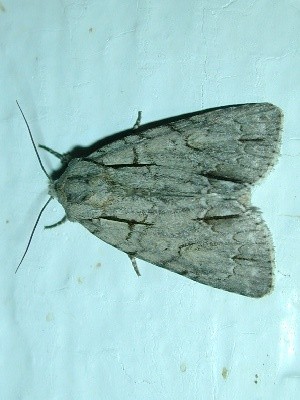Birch dagger moth
(Acronicta betulae)

Description
Acronicta betulae, the birch dagger moth, is a moth of the family Noctuidae. It is found from New Hampshire to Florida, west to Texas, north to Wisconsin. The wingspan is 35–40 mm. Adults are on wing from March to May and from August to September in two generations. The larvae feed on the leaves of birch, possibly exclusively Betula nigra. Acronicta is a genus of noctuid moths containing about 150 species distributed mainly in the temperate Holarctic, with some in adjacent subtropical regions. The genus was erected by Carl Linnaeus in his 1758 10th edition of Systema Naturae. Caterpillars of most Acronicta species are unmistakable, with brightly colored hairy spikes, and often feed quite visibly on common foliate trees. The hairy spikes may contain poison, which cause itchy, painful, swollen rash in humans on contact. The larva of the smeared dagger moth (A. oblinita) is unusually hairy even for this genus. Acronicta species are generally known as dagger moths, as most have one or more black dagger-shaped markings on their forewing uppersides. But some species have a conspicuous dark ring marking instead. Its eyes are naked and without eyelashes. The proboscis is fully developed. Antennae are simple in both sexes. Thorax and abdomen tuftless. Abdomen with long coarse hair on the dorsal part of proximal segments. Legs spineless. Forewings with non-crenulate cilia. Inner margin slightly lobed towards base.
Taxonomic tree:







